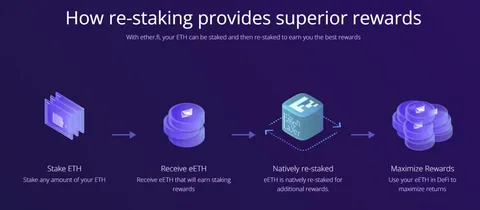Introduction to the Stake Anyone Protocol
The Stake Anyone Protocol represents a significant development in the blockchain and decentralized finance (DeFi) space. It aims to democratize the staking process, making it accessible to a broader audience. Staking, a fundamental component of various blockchain networks, involves participants locking up their assets to support network operations, such as validating transactions or securing the network. Traditionally, staking has required a certain level of technical expertise and a substantial amount of capital, which can be a barrier for many potential participants. The Stake Anyone Protocol addresses these issues by creating a more inclusive and user-friendly system.
This protocol simplifies the staking process, allowing individuals with varying levels of technical knowledge and financial resources to participate. It is designed to lower the entry barriers, making staking more accessible to the general public. By doing so, it aims to enhance the overall decentralization of blockchain networks and increase their security and efficiency.
How Stake Anyone Protocol Works
The Stake anyone protocol operates by leveraging smart contracts and decentralized applications (dApps) to facilitate the staking process. Unlike traditional staking mechanisms, which often require users to manage their own nodes or stake directly through the blockchain, the Stake Anyone Protocol uses intermediary smart contracts to handle these tasks.
When a user wants to participate in staking, they interact with the protocol through a user-friendly interface provided by a dApp. The protocol then manages the underlying complexities, such as node management and staking logistics, on behalf of the user. This approach allows users to stake their assets without needing to understand or manage the technical aspects of the process. Additionally, the protocol often includes features such as automatic staking adjustments and reward distribution, making it even more user-friendly.
Benefits of the Stake Anyone Protocol
One of the primary benefits of the Stake Anyone Protocol is its ability to lower the entry barriers to staking. By simplifying the process and removing the need for technical expertise, it opens up staking opportunities to a broader audience. This inclusivity can lead to increased participation in blockchain networks, which in turn enhances their security and decentralization.
Moreover, the protocol often includes features that optimize staking rewards, such as automatic re-staking and fee management. These features help users maximize their returns without requiring active management. Additionally, the use of smart contracts ensures transparency and security in the staking process, as the rules and conditions are enforced automatically by the blockchain.
Potential Challenges and Considerations
Despite its advantages, the Stake Anyone Protocol is not without its challenges. One potential concern is the reliance on intermediary smart contracts, which introduces an additional layer of complexity. While these smart contracts are designed to simplify the staking process, they also represent a potential point of failure. Users must trust that these contracts are secure and function as intended.
Another consideration is the protocol’s dependency on the underlying blockchain’s health and performance. If the blockchain network experiences issues, it could affect the protocol’s operation and the users’ staking rewards. Therefore, users should be aware of these potential risks and choose protocols and blockchains with a strong track record of reliability and security.
Conclusion
The Stake Anyone Protocol represents a significant step forward in making staking more accessible and user-friendly. By simplifying the staking process and lowering the barriers to entry, it has the potential to democratize participation in blockchain networks and enhance their overall decentralization. However, users should remain aware of the potential risks and challenges associated with the protocol. As the DeFi space continues to evolve, protocols like Stake Anyone will play a crucial role in shaping the future of blockchain technology and its accessibility.

